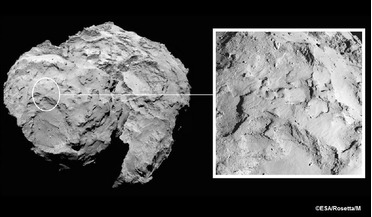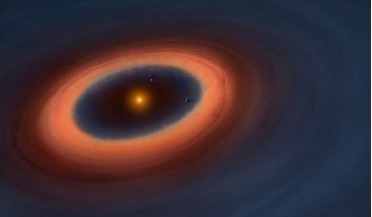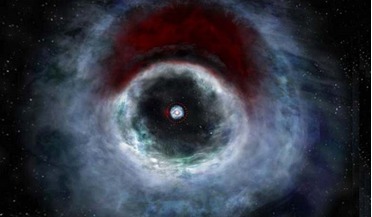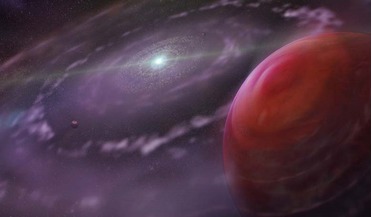 December 2014
Rosetta revelations: the fabric of comet 67P/Churyumov-Gerasimenko
December 2014
Rosetta revelations: the fabric of comet 67P/Churyumov-Gerasimenko
... comets work; where the material comes from; how the solar nebula looked; how the first planetesimals accreted; how the Earth got its water; and, finally the origin of life. The mission is already...
 April 2018
Developing Mars
April 2018
Developing Mars
... Letters. 7 Kraus, R. G., Root, S., Lemke, R. W., Stewart, S. T., Jacobsen, S. B., & Mattsson, T. R. (2015). Impact vaporization of planetesimal cores in the late stages of planet formation. Nature Geoscience, 8(4), 269. 8 Wieczorek, M. A., Weiss...
 30 November 2015
“Alien Megastructure” Star's Dimming was Possibly Caused by Comets
30 November 2015
“Alien Megastructure” Star's Dimming was Possibly Caused by Comets
... collision in a KIC 8462852 asteroid belt, a giant impact disrupting a planet in the system or a population of dust-enshrouded planetesimals," Marengo and his colleagues wrote in the new study, which was published this month in The Astrophysical...
 27 January 2016
Interaction between protoplanetary disks and planets confirmed by astronomers using ALMA
27 January 2016
Interaction between protoplanetary disks and planets confirmed by astronomers using ALMA
...-drift is not as effective as expected, showing that grains could survive the so called ‘radial-drift barrier.’ As planetesimals grow, models also predict that a forming giant planet should carve a gap or cavity in a protoplanetary disc, causing...
 15 February 2016
Astronomers provide new insights into planet formation around binary stars
15 February 2016
Astronomers provide new insights into planet formation around binary stars
..., you increase their capability to stick together." These colliding snowballs will then grow big enough to form planetesimals and eventually combine to build even bigger objects. The team speculate that this crescent-shaped dust...
 29 March 2016
To build super-Earths near host star 'dead zones' are required say researchers
29 March 2016
To build super-Earths near host star 'dead zones' are required say researchers
... simply migrated into the growing Sun and were lost. It is suggested, that within our Solar System, planetesimals formed within a few million years of the birth of the Sun and while the giant planets were...